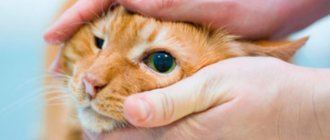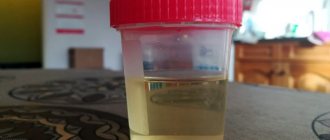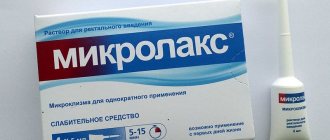Veterinary specialists in clinical practice often encounter various diseases that affect the skin of pets. One of the common reasons why cat owners go to a veterinary hospital is an abscess.
Cats that have free access to the street are especially often exposed to the pathological process. It is yard animals that more often come into contact with the outside world, receiving injuries from their relatives during fights, when scratched by branches and thorny bushes. It is worth noting that despite the fact that pets who prefer a quiet home lifestyle can also suffer from a developing abscess.
An abscess is a pathology that is an affected area on a cat’s body filled with purulent exudate as a result of the development of pathogenic microflora. Most often, domestic cats are diagnosed with dental abscesses that develop against the background of periodontal disease and lack of timely treatment. As a result, this leads to serious violations.
The second most common diagnosis is an abscess obtained during a fight with relatives or dogs. The damage received by the animal is not always detected by the owner in a timely manner; accordingly, the introduced infection leads to the formation of suppuration and abscess.
An abscess can develop against the background of bites during fights with relatives. It is in this case that a deep, puncture-type wound surface is formed. Opportunistic microflora is always present in the oral cavity of domestic cats and dogs. When a cat licks a wound, it becomes infected.
The healed wound surface is isolated from the outside world, and the infection is located inside. Rapidly multiplying pathogenic microorganisms provoke the appearance of pus. The body cannot cope with this on its own and an abscess develops.
The appearance of an abscess on any part of the animal’s body provokes painful sensations and the pet’s general well-being worsens. The danger of the formation of purulent inflammation lies in the high risk of necrosis of the area and subsequent sepsis. The main method of therapy is surgical excision and the administration of therapeutic doses of antibiotics.
How to recognize
If a small red spot appears on a cat's skin, which enlarges and becomes soft, an abscess is suspected. Later, pus accumulates in this place, the seal turns yellow, and the pet experiences pain.
What is an abscess
This is an inflammatory process of the upper layers of the skin, into which dirt or a foreign body has entered. They penetrate the integument through wounds or abrasions.
Pathology can also develop in the oral cavity when a bone or splinter gets stuck in the soft tissue.
What microorganisms cause
An abscess (abscess) occurs due to the introduction of streptococci and staphylococci into the wound. Microorganisms actively multiply inside the skin, the immune system tries to destroy them, remove them from the body, and suppuration begins.
Difference from phlegmon
An abscess detected in time does not pose a serious threat to the health of the animal if treatment is started immediately.
You should beware of purulent diseases such as phlegmon. With this pathology, inflammation develops in the deep tissues of the skin; it does not have clear boundaries, which leads to the development of gangrene.
Clinical signs and diagnosis
The main symptoms of education include:
- inflammation of the skin in the affected area;
- tumor development;
- elevated temperature;
- the wool becomes matted and dull;
- pain when pressed;
- pus from the wound, the appearance of a bald spot in the area of the tumor;
- unpleasant odor from an abscess;
- fever;
- lack of appetite.
First, a red spot forms at the site of the wound, which gradually grows. At this stage, cat owners may not notice the symptoms, since the spot is under the fur. A few days later, a small lump appears in its place, with liquid inside.
If the cat’s immunity is strong, the pus quickly becomes thick, and the skin in the area of formation bursts, releasing the infection. In this case, the wound can be treated and drainage installed, which greatly simplifies both the diagnosis and the treatment itself.
If the cat is weakened after an illness or has chronic diseases that affect the immune system, then the inflammation gradually spreads. The skin becomes hot, and when the abscess is palpated, the cat tries in every possible way to avoid palpation. The worst case of mammary gland abscess occurs in cats that have lambed or are just expecting offspring. Her temperature rises, there is practically no appetite, which threatens miscarriage or missed abortion.
© shutterstock
At this time, changes are observed in the pet's behavior. He becomes nervous and irritable, sometimes aggressive, and hisses when he tries to approach the food bowl.
In the early stages, the disease is difficult to detect. In special cases, it may be necessary to analyze bacterial cultures for the presence of foreign microbes or analyze fluid (pus) from the source of infection. Often, extensive testing is necessary to make a correct and accurate diagnosis.
Types of abscesses
Depending on the location of the purulent process, abscesses in cats are divided into several types.
Surface
Location: upper layers of skin. Purulent capsules are small in size, do not cause blood poisoning, and do not pose risks to the health of the animal.
Deep
In this type, the pathological process involves muscle tissue and fat. The presence of a purulent capsule can be determined by palpation.
Odontogenic
Occurs in the oral cavity in the presence of advanced periodontitis. Often the process affects the roots of the teeth.
Paraanal
This is a pathology of the glands located in the anal area.
Neoplasms in the neck and head area
Purulent inflammation occurs when the skin is injured during a fight or injured in another way, and then becomes infected.
Factors influencing the appearance of pathology
Veterinarians note that mechanical damage is the most common cause of abscesses in kittens and adults in the ear, mouth, cheek and other areas of the skin.
Since felines are predators, fights often occur among identical individuals, resulting in scratches, teeth marks and other injuries that can lead to the formation of a boil with pus. Other types of damage in cats can also affect the development of pathology:
- being hit by a car;
- blow with a piercing object;
- falling from a great height;
- paw damage from a splinter;
- injury to the oral mucosa by a bone or foreign object.
Improper intramuscular injection often leads to such a problem in an animal.
When a mechanical injury occurs, pus collects under the skin, which subsequently causes abscesses. It is strictly forbidden to open the resulting boils yourself, as this will lead to infection. Other reasons can also affect an abscess in cats:
- Dental diseases. If a pet has a broken tooth, caries, or periodontal disease, there is a high risk of abscesses.
- Performing intramuscular or subcutaneous injections with insufficient compliance with antiseptic rules.
- Furunculosis, hematomas and other disorders after injuries, which are accompanied by a purulent-inflammatory reaction.
- Inflamed paraanal glands.
Older cats, as well as pets with weak immune system defense mechanisms, are more susceptible to developing an abscess. Another predisposing factor in the progression of the pathological process are secondary diseases. When keeping a pet in unfavorable conditions, where there is a lot of dirt, the risks of injury and the development of an abscess increase.
Forms of abscesses
Depending on the course of the disease, there are several forms of abscesses in cats:
cold: characterized by a sluggish course, with relapses turning into a chronic form;- superficial: can develop if you independently open a subcutaneous abscess in a cat, rarely accompanied by complications;
- deep: purulent compaction is observed in the deep layers of the skin or muscles, immediate treatment in a hospital is required;
- acute: only surgical opening will help; if left untreated, the prognosis is unfavorable;
- benign: goes away on its own, does not require special therapy, is accompanied by purulent discharge of white or yellow color;
- malignant: may indicate insufficient immunity, accompanied by an unpleasant odor in the mouth
The veterinarian will be able to accurately determine the area of inflammation and identify the form of the disease during the examination.
Reasons for the formation of suppuration
An abscess forms on a cat’s body due to dirt getting into even small wounds. Skin damage occurs for various reasons.
Injuries
The skin is often damaged during fights between animals. In the oral cavity, wounds occur when eating small bones, branches, or gnawing hard objects.
Failed injection
Often the infection gets into the wound when injections are given at home, on your own. An unsterilized instrument, incorrect dosage, temperature and consistency of the injected substance can lead to the development of an abscess.
Failure to comply with hygiene standards
In a dirty room, germs get into even the smallest scratch.
If the owner does not keep the pet’s mouth clean, dental diseases with abscesses develop.
Why can cats develop an abscess?
An abscess, as a rule, develops as a result of infection in a wound of even a small size. Most often, wounds on the body or mucous membranes of an animal occur as a result of:
- fights between cats, especially during heat;
- eating small bones and solid food, as well as in the absence of oral hygiene of the cat (in this case, the oral mucosa is affected);
- scratches and punctures from branches, grass, pebbles, thorns, needles;
- subcutaneous injections of poorly soluble drugs;
- non-compliance with sanitary standards for intravenous, intramuscular or subcutaneous administration of drugs (for example, an infection can be caused by an unsterile needle, as well as if sterility standards are not observed);
- bird attacks;
- bites from other animals.
An abscess does not always occur at the site of the lesion. It all depends on the size and depth of the wound, as well as the bacterial microflora that got into it. Thus, most often suppuration is caused by staphylococci, streptococci, Escherichia coli, Pseudomonas aeruginosa, anaerobic bacteria, and mycoplasmas.
Which animals are at risk?
The following categories of pets are most at risk of developing suppuration:
- stray - they most often get into fights with other animals;
- males, especially up to the age of seven, fight more often than females;
- uncastrated pets who often visit the street - this category is considered by other cats as potential rivals, which is why skirmishes also flare up;
- cats and cats with weakened immune systems.
Cats that go outside are at risk for developing abscesses
Animals at risk
The risk of purulent abscesses is higher in stray cats: they are more likely to get into fights with other members of the species and live in unsanitary conditions.
Other categories:
males under 7 years of age have a strong sexual instinct and often fight while walking;- non-castrated animals are perceived by other cats as serious rivals and are injured in fights;
- cats and cats if their immunity decreases for any reason.
Outdoor pets often suffer from purulent abscesses.
Signs of suppuration development
In cats, purulent abscess is a common occurrence. It is important for the pet owner to know all the symptoms of the pathology in order to respond promptly and correctly to its appearance.
An abscess goes through 5 stages of development:
- Redness of a small area of skin . The pathological process can only be identified with a detailed examination. The animal does not experience any discomfort when the disease occurs.
- Edema . As the infection spreads, a cavity forms under the skin, which gradually fills with pus and swells.
. The purulent capsule is completely filled with contents, increases in size, and becomes convex.
Fluctuation- Baldness . Hair begins to fall out on the affected areas of the skin and they become completely bare. During this period, the owner can easily determine the presence of pathology.
- Tissue necrosis . Ideally, if the animal has a strong immune system, if there is severe suppuration, the purulent capsule should rupture, and the contents will come out to the surface of the skin. In weakened animals, the inflammatory process continues and healthy cells become infected.
Diagnostic procedures
An abscess can appear in pets after sterilization or under the influence of other negative factors. When the first symptoms develop, you should contact a veterinarian who will help you properly treat the disease without causing complications. Before treatment, a comprehensive diagnosis is carried out to determine the source of the abscess, its type and severity. The cat needs to undergo the following diagnostic procedures:
- laboratory testing to determine the causative agent of the disease;
- antibiotic sensitivity test.
During differential diagnosis, the presence of a hematoma in the animal should be excluded.
No less important is differential diagnosis, which helps to distinguish an abscess in a cat from pathologies such as:
- cystic formation;
- benign or malignant tumor;
- granuloma;
- hematoma;
- lymphoextravasate.
Treatment
After detecting a pathological process in a pet, you must immediately contact a veterinary clinic.
The sooner you start treating an abscess, the fewer negative consequences for the animal’s health will arise later.
Medicines
In the first stages of infection, pharmaceutical or veterinary drugs are used.
Antibacterial and anti-inflammatory agents are used. For these purposes, broad-spectrum antibiotics of the penicillin series are recommended: Tetracycline, Penicillin, Sinulox. The duration of therapy is from 7 to 14 days.
Surgical intervention
More often, an abscess requires opening in a hospital setting.
The place of suppuration is cleaned of hair and treated with antiseptics. Painkillers are administered, and the abscess is opened with a sterile scalpel. The pus from under the skin is cleaned out and drainage is installed.
After 3 days, the drainage tube is removed, anti-inflammatory ointments (Vishnevsky, Tetracycline) are placed in the wound, and a sterile bandage is applied. It is changed daily, tissue treatment is carried out twice a day.
To exclude the development of re-infection, broad-spectrum antibiotics are prescribed.
Treatment at home
Squeezing out ulcers on an animal’s body yourself is strictly prohibited. Without knowing the technology of tissue cleansing, you can direct the flow of pus under the skin or reinfect the infection.
There is a high risk of blood poisoning, which leads to irreversible consequences.
Prognosis without treatment
If the pet is not given medical care, this will lead to tissue necrosis, infection of healthy cells, and infection in an open wound. As pus spreads under the skin, the outcome can be fatal.
Why might illness occur?
When interacting with other animals, small wounds or bites may occur. Injury can also occur due to negligence. Open wounds provide direct access to infections. An interesting fact is that the smaller the wound, the greater the likelihood of an abscess. This is explained by the fact that when the wound is open, foreign microelements leave the body through blood and pus. But when it is small and deep, for example from the bite of another animal, then the small area of damage on top quickly heals, and inflammation begins inside. You should be aware that your pet's claws or teeth may contain germs. When they enter the body, they can lead to inflammation.
Prevention of the development of purulent formations
Cat owners should try to prevent any disease in their pets. Preventive measures are the best remedy for the development of an abscess.
Necessary activities:
- castration;
- limiting walks on the street and contact with yard animals;
- vaccination according to schedule;
examination and sanitation of the oral cavity, brushing teeth twice a week;- exclusion of small bones and rough foods from the diet;
- regular inspection, identification of skin damage, their timely disinfection and treatment;
- sterilization of instruments during medical procedures at home;
- treatment for fleas, ticks, lice;
- maintaining sanitation and hygiene.
As soon as a kitten gets into the house, it needs to create all the necessary conditions for proper development, provide age-appropriate food, and provide timely veterinary care.











